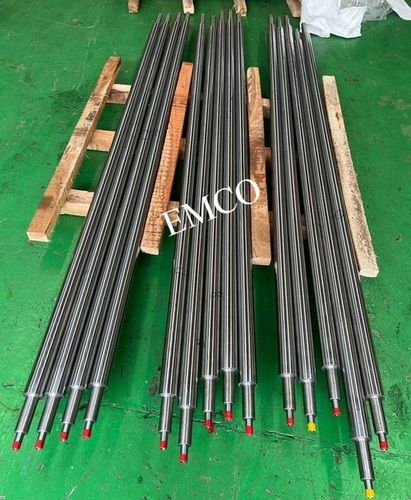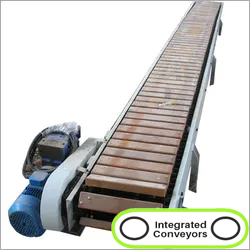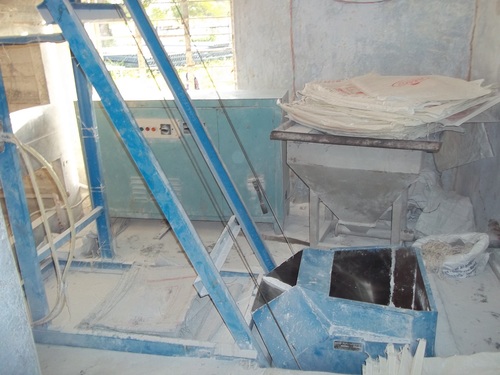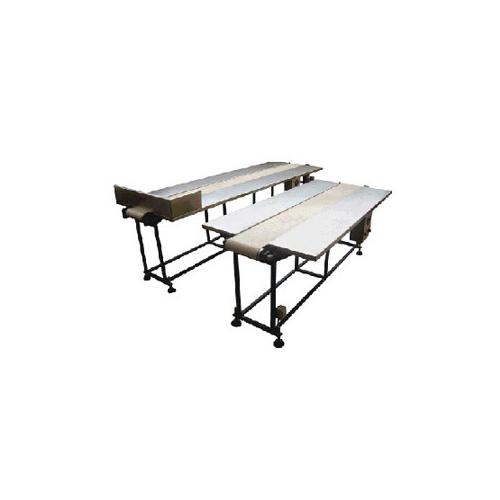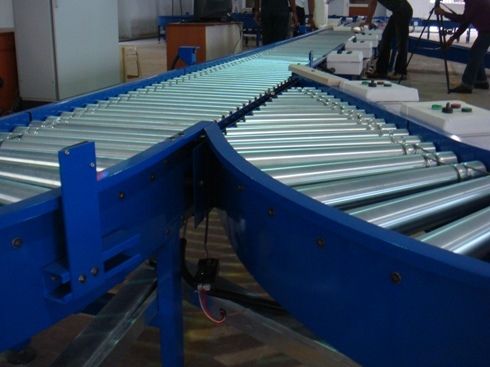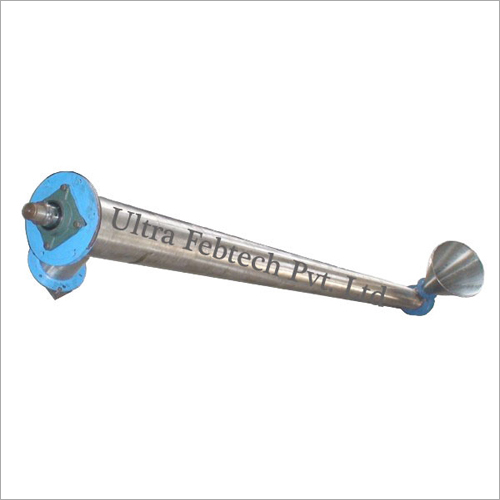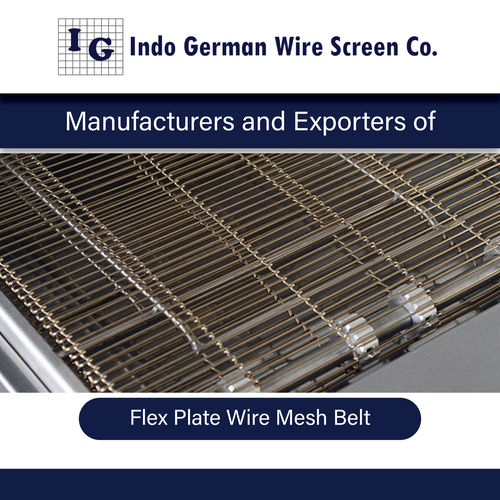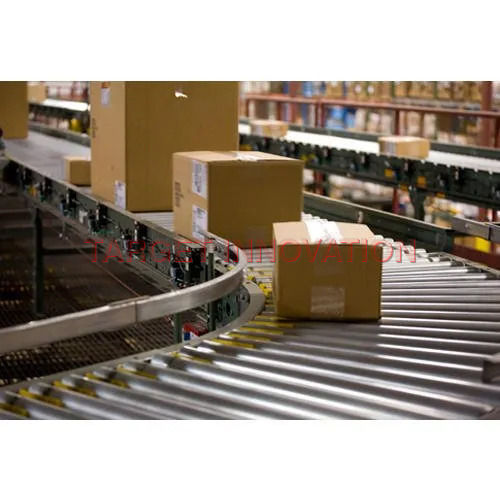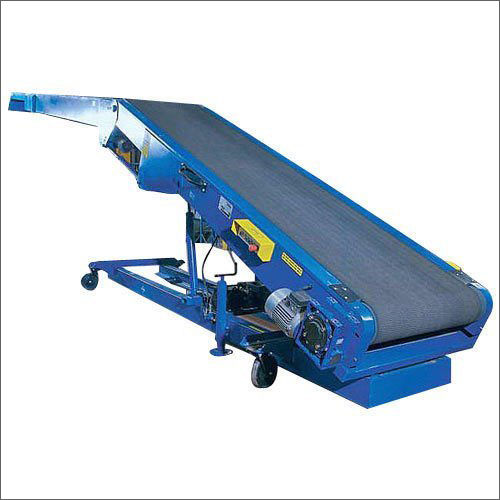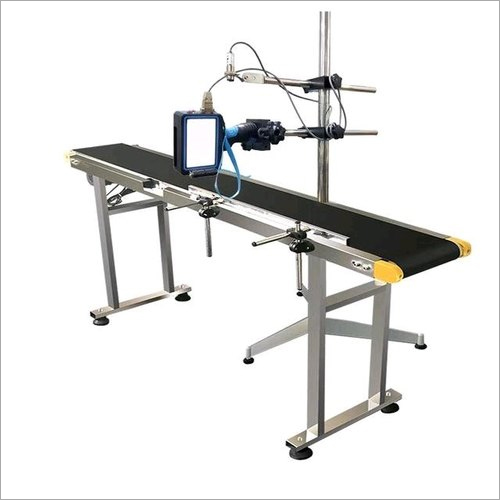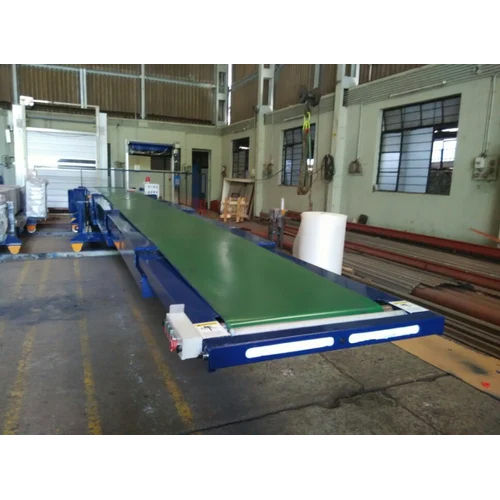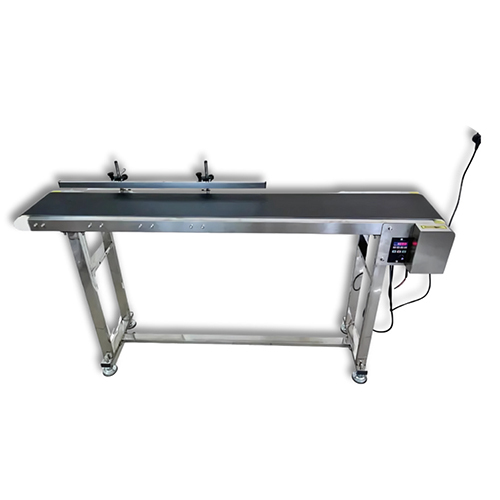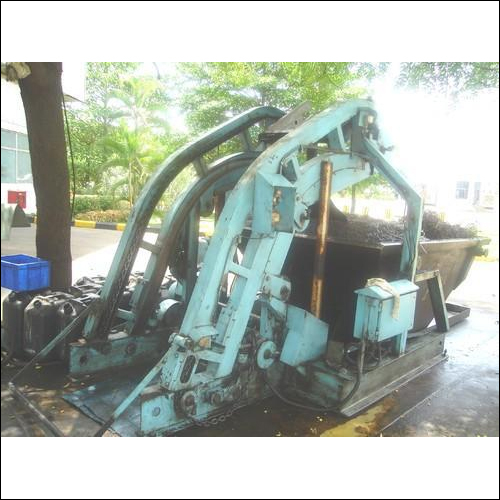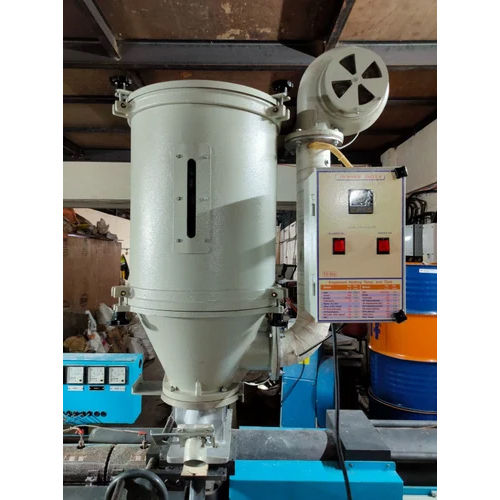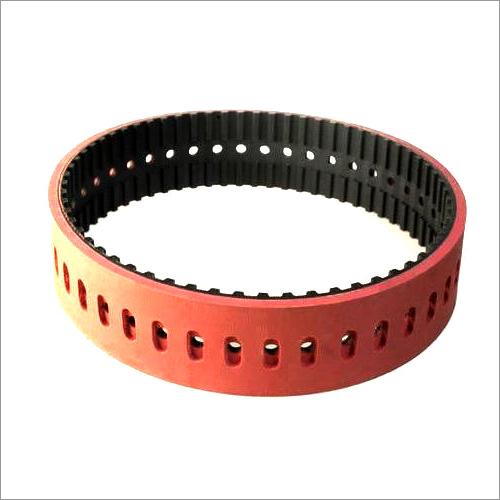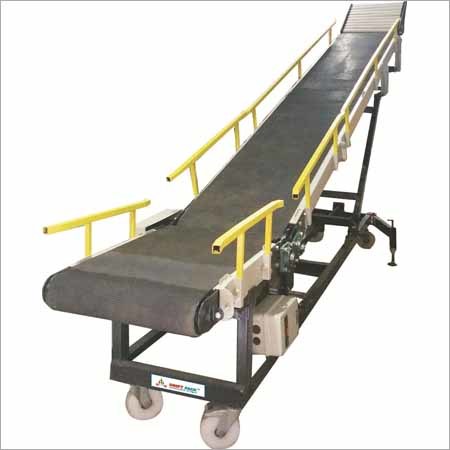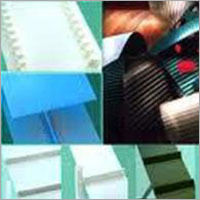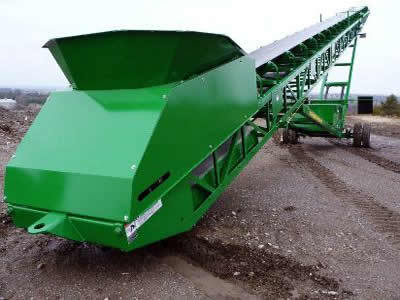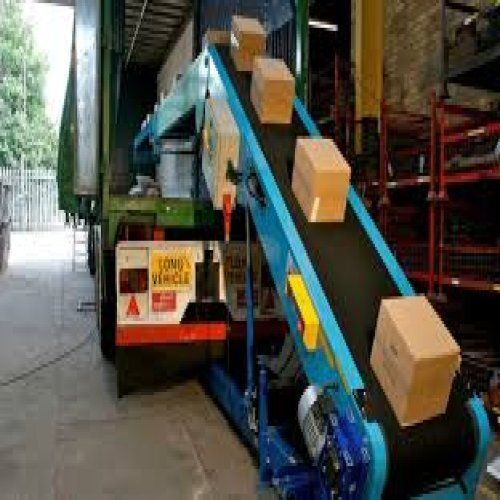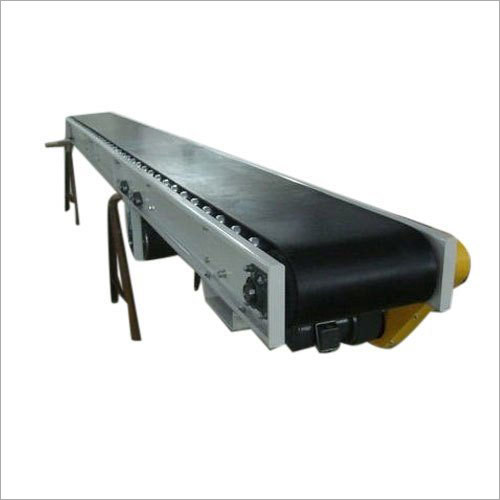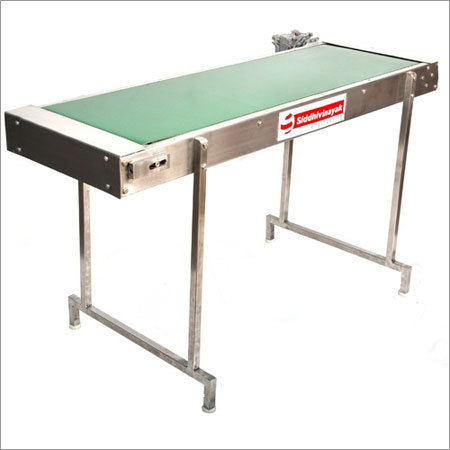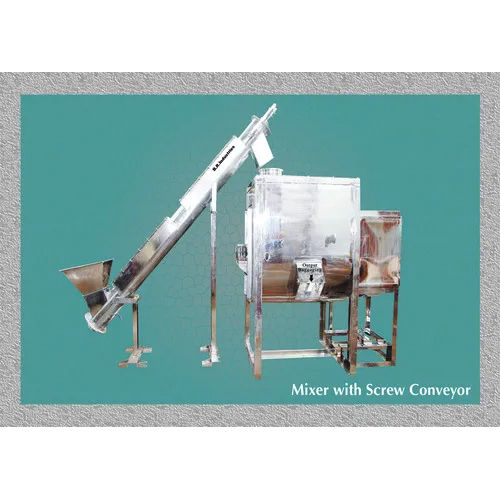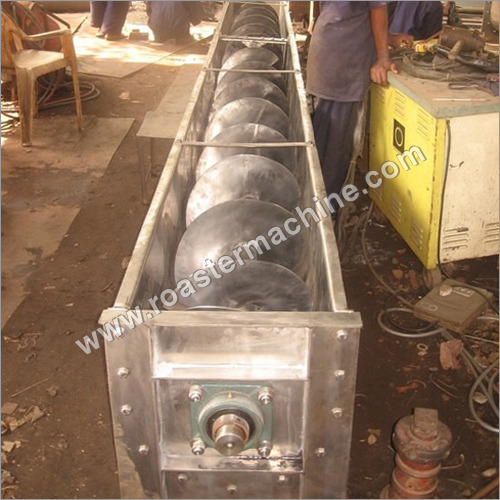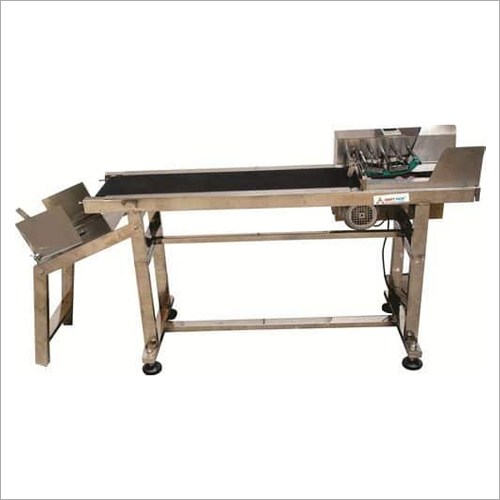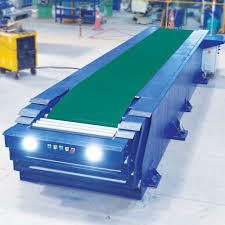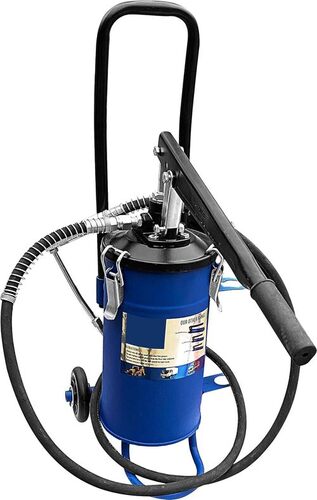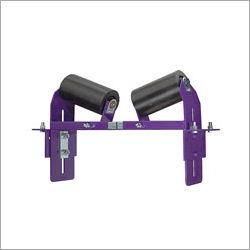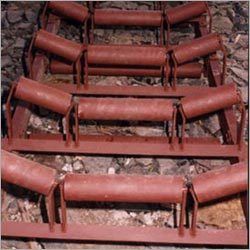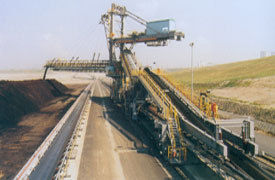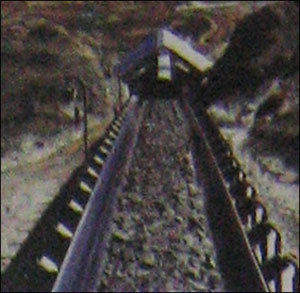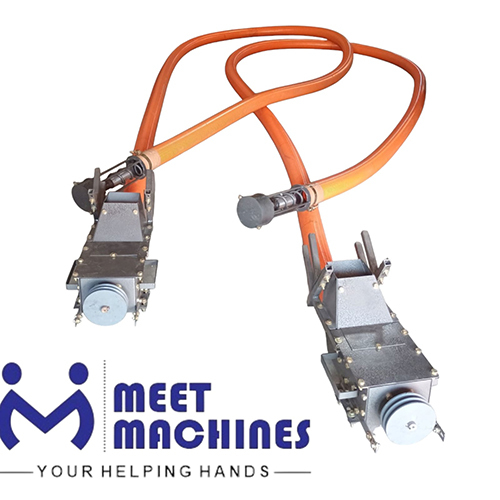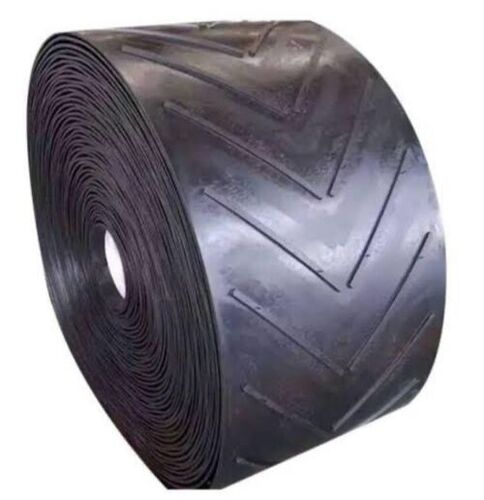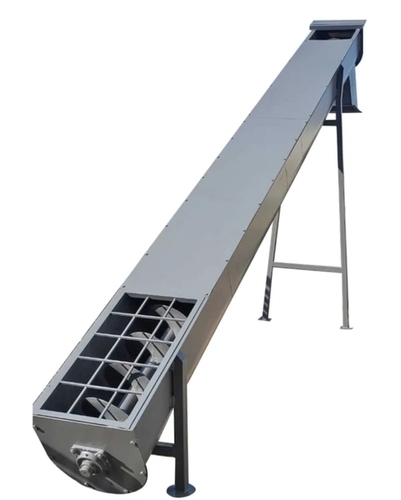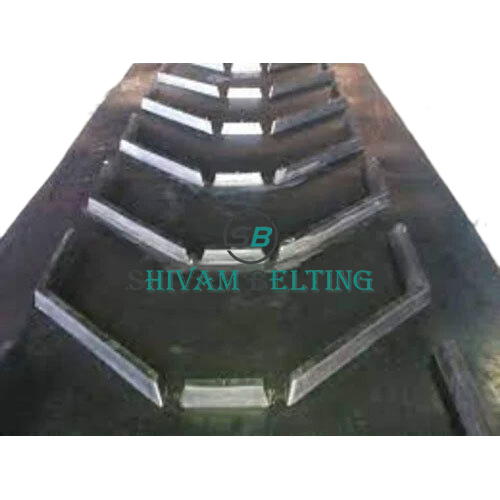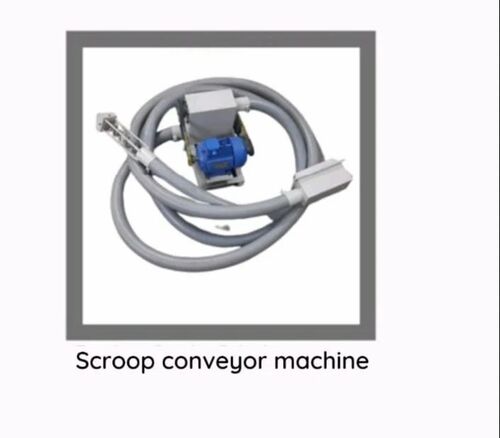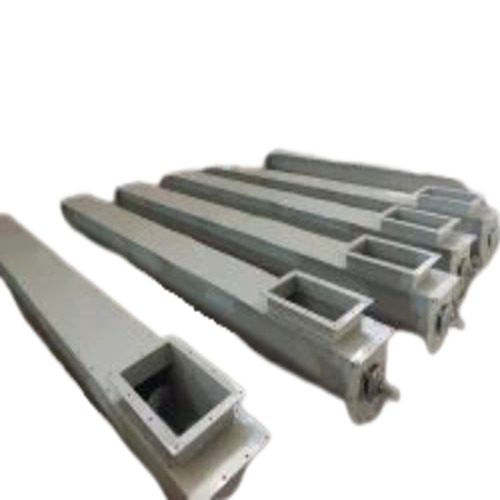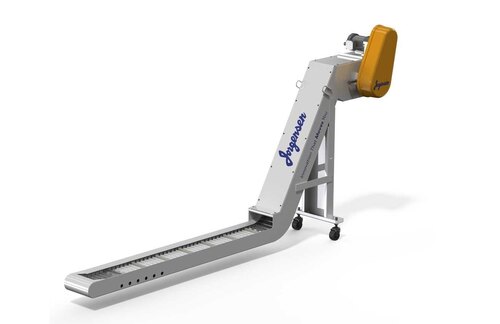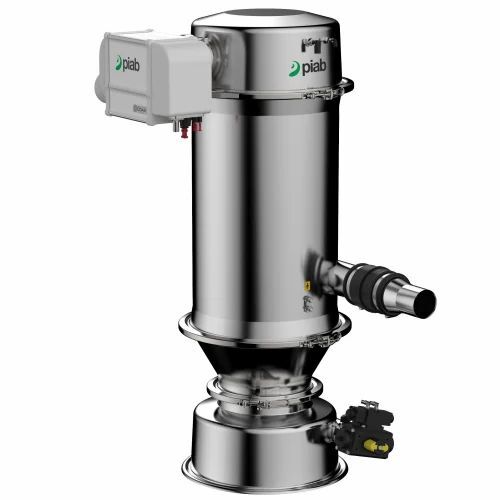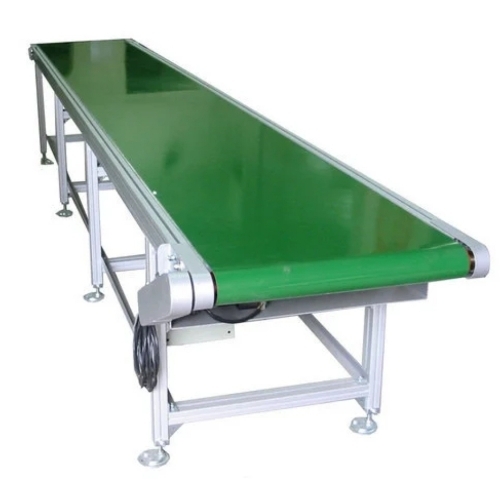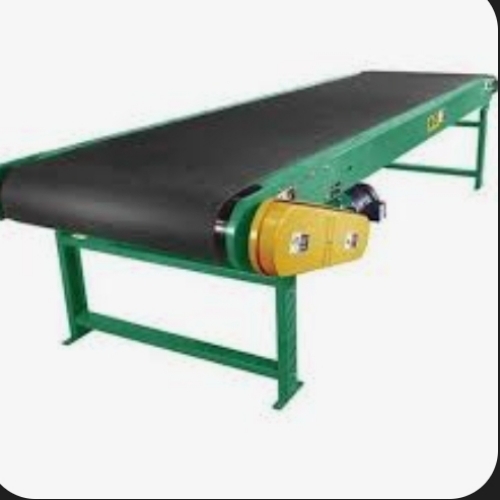Conveyor & Conveyor/Industrial Belts
(11391 products)Silver Work Leveler Roller
Price: 10000 INR/Number
MOQ10 Number
ColorSilver
Product Typework leveler roller
UsageRoller leveling. Roller leveling is essentially a bending process. The out of flat part, sheet or plate is deformed by a series of alternating bends.
Resistant FeatureOther
Emco Engineering
Mumbai
 Super Bonanza
Super Bonanza6 Years
Gray Industrial Metal Slat Conveyor
Price: 68000.00 INR/Unit
MOQ1 , Unit/Units
Product TypeMetal Slat Conveyor
ColorGray
Weight600 Kilograms (kg)
UsageMaterial Handling
MaterialMS and SS
TypeSlat Conveyor
Integrated Conveyors And Pacline Automation Technologies
Coimbatore
 Super Bonanza
Super Bonanza7 Years
 Super Premium
Super PremiumSkip Hoist - Customized Size, 3 or 15 Ton Load Capacity, Blue | Efficient Bulk Material Handling, Low Maintenance, High Speed of 30
Price: 395000 INR/Unit
MOQ1 Unit/Units
Product TypeSkip Hoist
SizeCustomized
ColorBlue
UsageIndustrial
TypeOther, Skip Hoist
Load Capacity3 or 15 Tonne
Sigma Instrumentation
Ahmedabad
15 Years
 Super Premium
Super PremiumStainless Steel Packing Belt Conveyor By Nu Pharma Engineers & Consultant
Price: 80000 INR/Unit
MOQ1 Unit/Units
SizeStandard
ColorSilver
UsageIt is used for transferring of goods.
Product TypePacking Belt Conveyor
MaterialStainless Steel
TypeBelt Conveyor
Nu Pharma Engineers & Consultant
Ahmedabad
 Super Bonanza
Super Bonanza12 Years
Blue Automatic Belt Conveyor
Price: 75000 INR/Unit
MOQ1 Unit/Units
Product TypeAutomatic Belt Conveyor
SizeCustomized
ColorBlue
UsageIndustrial
MaterialCarbon Steel
TypeBelt Conveyor
Magna Tronix
Chennai
4 Years
High Strength And Galvanized Packing Belt Conveyor
Price: 125000 INR/Piece
MOQ2 Piece/Pieces
Product TypeHigh Strength Packing Belt Conveyor
ColorBlue
MaterialPVC
TypeBelt Conveyor
Belt ConveyorFlat Belt
Join Pack Machines (pvt.) Ltd.
Delhi
18 Years
Screw Conveyor - Metal Design | Industrial Usage with High Efficiency and Robust Durability
Price: 150000 INR/Unit
MOQ1 Unit/Units
UsageIndustrial
MaterialMetal
TypeOther
Ultra Febtech Private Ltd.
Ahmedabad
4 Years
 Super Premium
Super PremiumSilver Flex Plate Wire Mesh Belt
Price Trend: 1000.00 - 100000.00 INR/Foot
MOQ50 , Foot/Feet
Product TypeHeat resistance
UsageConveyor Belt
ColorSilver
Indo German Wire Screen Co.
Mumbai
11 Years
Flexible Conveyor - Stainless Steel | Automatic Operation, Magnetic Belt, Various Sizes Available, Industrial Use
Price: 250000 INR/Unit
MOQ1 Unit/Units
UsageIndustrial
SizeDifferent Available
Colorsilver
MaterialSS
Belt ConveyorMagnetic Belt
WarrantyYes
Target Innovations
Goa
 Super Bonanza
Super Bonanza5 Years
Mild Steel Telescopic Conveyor Usage: Industrial
Price: 150000 INR/Unit
MOQ10 Unit/Units
UsageIndustrial
Product TypeMild Steel Telescopic Conveyor
MaterialStainless Steel
TypeOther
Resistant FeatureHeat Resistant
Reidius Engitech Private Limited
Ahmedabad
7 Years
Egg Stamping Printer Conveyor
Price: 90500 INR/Piece
MOQ1 Piece/Pieces
Product TypeOnline Batch Coding machine with conveyor
UsageFor batch coding on single egg
Ridhi Enterprise
Pune
5 Years
Telescopic Belt Conveyor - Mild Steel, 240 Voltage | Versatile Loading & Unloading Solution
Price: 750000 INR/Piece
MOQ1 Piece/Pieces
Product TypeTelescopic Belt Conveyor
MaterialMild Steel
Voltage240 Volt (v)
Parul Engineering Private Limited
Pune
3 Years
 Super Premium
Super PremiumAutomatic Packing Belt Conveyor
Price: 280000 INR/Unit
MOQ1 Unit/Units
UsageIndustrial
Product TypeAutomatic Packing Belt Conveyor
SizeDifferent available
MaterialMild Steel
Warranty1 Year
Auto Power Pack
Puducherry
4 Years
Green Screw Conveyor
Price: 100000 INR/Piece
MOQ1 , Piece/Pieces
ColorGreen
MaterialCarbon Steel, Stainless Steel
Load Capacity100-150 per feet Kilograms (kg)
Mitsun Engineering
Vadodara
21 Years
 Super Premium
Super Premium12 Inch Conveyor For Inkjet Printer - Color: Silver
Price: 20000 INR/Piece
MOQ1 Piece/Pieces
Surface FinishSteel Finish
Product Type12 INCH CONVEYOR
ColorSilver
UsageIndustrial
Power SourceElectricity
SizeStandard
Slexo Packaging
Ahmedabad
2 Years
 Super Premium
Super PremiumGreen Trolley Lifter
Price: 82000 INR/Piece
MOQ1 Piece/Pieces
UsageIndustrial
ColorGreen
Product TypeTrolley Lifter
Height0-20 Foot (ft)
MaterialMild Steel
TypeTrolley Lifter, Other
Amey Shredtech Private Limited
Thane
18 Years
 Super Premium
Super PremiumHopper Loading Machine Rated Voltage: 220V Volt (V)
Price: 45000 INR/Piece
MOQ1 Piece/Pieces
UsageAir convening
Rated Voltage220V Volt (V)
Voltage220V Volt (v)
Product TypeOther
TypeOther, Loader
Warranty12 months,24 months
Re Blowers India Private Limited
Mumbai
15 Years
Perforated Belts - High-Quality Synthetic Material, Adjustable Sizes for Versatile Usage
Price: 1000 INR/Square Foot
MOQ100 Square Foot/Square Foots
ThicknessStandard thickness
Power SourceManual or Mechanical
FeaturesHigh functionality and durable
Surface FinishSmooth and perforated
Belt TypePerforated
MaterialRubber
Superfit Engineering Private Limited
Mumbai
4 Years
 Super Premium
Super PremiumTruck Loading and Unloading Conveyor - Metal Belt, 3 Phase 440 V AC Power | Flat Belt Structure, Robust Performance
Price: 185000 INR/Piece
MOQ1 Piece/Pieces
MaterialMetal
TypeBelt Conveyor
StructureBelt
Belt ConveyorFlat Belt
Power3 Phase * 440 V AC Electromagnetic (emu)
Shri Vinayak Packaging Machine Pvt. Ltd.
New Delhi
20 Years
PVC/PU Conveyor Belts - Durable Belt Type | Heavy-Duty Structure, Efficient Material Handling Solutions
Price: 100.00 INR/Meter
MOQ10 , Meter/Meters
TypeBelt Conveyor
StructureBelt
Softex Industrial Products Pvt. Ltd.
Kolkata
18 Years
Material Handling Conveyor - Heavy-Duty Steel Frame, Adjustable Height Design, Low Friction Rollers, Enhanced Durability
Price Trend: 20000.00 - 40000.00 INR/Unit
MOQ1 , Unit/Units
Supply Ability1 Per Week
Delivery Time1 Week
Balkrishna Boilers Pvt. Ltd.
Ahmedabad
6 Years
 Super Premium
Super PremiumBag Stacker - Material: Ss
Price: 260000 INR/Set
MOQ1 Set/Sets
UsageIndustrial
Product TypeBag Stacker
SizeStandard
MaterialSS
TypeHydraulic, Other
Warrantyyes
Prominence Systems Pvt Ltd
Bhosari
 Super Bonanza
Super Bonanza2 Years
Pvc Belt Conveyors - Color: Sliver
MOQ1 Piece/Pieces
Width2000 Millimeter (mm)
ColorSliver
MaterialMild Steel
StructureRoller
Belt ConveyorFlat Belt
Voltage410 Volt (v)
Moderate Machines (pvt.) Ltd.
Jaipur
14 Years
Packaging Side Table Belt Conveyor Usage: Industrial
Price: 85000.00 INR/Piece
MOQ1 Piece/Pieces
UsageIndustrial
TypeBelt Conveyor
StructureBelt
Belt ConveyorFlat Belt
Warranty1 year
Siddhivinayak Engineering
Ahmedabad
8 Years
 Super Premium
Super PremiumMixer With Screw Conveyor - Color: Silver
Price: 325000.00 INR/Piece
MOQ1 Set/Sets
ColorSilver
UsageIndustrial
Product TypeScrew Conveyor
MaterialStainless
TypeScrew Conveyor
Voltage415 Volt (v)
B. R. Industries
Hyderabad
15 Years
Screw Conveyors - Size: Custmize
Price: 150000 INR/Unit
MOQ1 Unit/Units
Usagechemical, pharmaceutical, food processing, cement and fertilizer industry
SizeCustmize
Vertical ConveyorOther
WarrantyYes
Fans Bro Erectors
Vasai
19 Years
Feeding & Stacking Inkjet Conveyor - 1.5m Length, 300mm Width | Stainless Steel, Variable Speed, Industrial Usage, Flat Belt
MOQ1 Piece/Pieces
UsageIndustrial
MaterialSS type
StructureBelt
Belt ConveyorFlat Belt
VoltageAC 220 Volt (v)
Power1.5 Watt (w)
Shri Vinayak Packaging Machine Private Limited
New Delhi
8 Years
Telescopic Conveyor - Stainless Steel, Industrial Use , Heat Resistant, 1 Year Warranty for Efficient Loading and Unloading
Price Trend: 675000.00 - 1675000.00 INR/Piece
MOQ1 , Piece/Pieces
UsageIndustrial
Product TypeTelescopic Conveyors
MaterialSS
Resistant FeatureHeat Resistant
Warranty1 Year
Mnt Industries
Indore
10 Years
Latest From Conveyor & Conveyor/industrial Belts
Conveyor Belt Guide
By:
Parth Industries
Conveyor& Conveyor Industrial Belts
By:
Geco Trading Corporation
Sintscrew Conveyors And Feeders
By:
Ganesh Marine Services
General Purpose Belt
By:
Oriental Rubber Industries Ltd
Inclined Conveyor
By:
Sri Srinivasa Engineering
Idlers
By:
Kali Bmh Systems (p) Ltd.
Belt Conveyors
By:
Nuwave Technology Pvt. Ltd.
Conveyors And Conveyor Elements
By:
Flexi Manufacturing Solutions Private Limited
Explore More Cities
Ready To Ship Conveyor & Conveyor/industrial Belts
What Are Conveyor Belts?
Introduction
Belt conveyors are one variety of conveyor systems, with the belt itself serving as the transport medium. Diverse modules are needed for each conveyor system to carry out its duties.
Weight, speed, and product throughput on the conveyor system are only a few factors that might determine the variety of activities involved.
An unending loop of carrying medium, the conveyor belt, spins around two or more pulleys (called drums) to create a pull effect for the products it is transporting. The belt and its load are pushed along by one or more motorized pulleys. In use since the nineteenth century, conveyor belts are a tried and true method of transport. Beginning in 1892, Thomas Robins invented the first conveyor belt to transport coal, ores, and other materials.
For the first time ever, mass manufacturing and batch production were both possible once Henry Ford installed conveyor-belt assembly lines in the Ford Motor Company facility.
What Are Conveyor Belts Used For?
Conveyor systems have many applications in industry, but their primary goal is to reduce labor costs while boosting throughput in a given area of production or transportation. This allows for a greater volume of products to be processed and shipped to customers more quickly.
Conveyor systems typically lower the space necessary to transport objects, allowing the operation to run in a smaller section of the facility and order to free up the office area, as a result of the reduced labor needed to carry out the task.
Although conveyors have widespread application across many sectors, they are particularly common in the warehousing and industrial sectors. Hermes' national sorting hub is one location where you can find them. The hub has benefited greatly from the addition of an automated conveyor system due to the significant boost in throughput it provides.
Belt conveyors can be made with curved portions that employ tapered rollers and curved belting, with optional parts like guards, gates, convergers, RFID scanners, and more to facilitate access to various points along the conveyor and prevent harm to the goods being transported.
Belt conveyors are the most popular type of powered Conveyor & Conveyor/Industrial Belts due to their low cost, adaptability (carrying items large and small, light and heavy, with jiggly edges and square boxes), and widespread availability.
What Are the Advantages of Conveyor Belts?
1. Reduces the Need for Hand-Pulled Effort
Much of the work done in the food sector involves the processing and management of bulk commodities. Miniature conveyor belts can significantly reduce the need for physical handling. They have the ability to completely replace humans in the workplace.
Prior to the widespread use of conveyors, the transportation of food products was a laborious, time-consuming, and inefficient procedure. The old saying that "time is money" is still true in many fields. The food business is not an exception.
Many restaurants and other food services lose production because they rely only on human labor. Due to this, money is lost.
2. Conveyor Belts Reduce Accidents
Pulleys, idlers, rollers, and tensioners are only a few of the many moving elements in mechanical systems. Because of conveyors, workers rarely have to interact with them and are less in danger than they would be if they had to move large loads themselves.
Newer conveyors also pose the reduced danger of mechanical breakdown and personal injury. Furthermore, as labor efficiency rises, fewer people will need to be present on the factory floor at any given time. As a result, there are fewer workers that need to be managed and supervised.
As an added bonus, workers are most likely to be located along the conveyor's edge. They won't have to touch any of the moving parts (unless maybe while doing repairs) unless absolutely necessary. This is a fantastic strategy for lowering risk at work.
Conveyors Improve Food Quality and Safety
You presumably prefer foods that haven't been handled by humans too often, and that's what we've got for you here. Conveyors are a great way to increase food safety, especially considering that so many items in today's supermarkets are produced in factories and warehouses.
Conveyor systems have improved greatly over the years, with many modern models including built-in hygiene features to ensure that goods and consumables remain contaminant-free. Dust-free and contamination-free conditions are crucial for food and drink goods prior to shipping.
An important part of being in compliance with the FDA and USDA is maintaining a clean and contaminant-free environment. A facility could be shut down or subject to fines if they fail to comply with government requirements. However, modern conveyor technology makes compliance much simpler for most establishments.
How Many Types of Conveyor Belts?
1. Sanitary and Washdown Conveyors
Objects coming out of ovens or freezers can be transported on these conveyors without losing any heat. Additionally, equipment used in the food business, in particular, must be able to withstand being submerged in glaze, breading, or hot oil. Larger washdown conveyors with flat wire belts are ideal for discharging broken bulk cargo like oil drums and crates from ships since they can safely handle both wet and oily objects.
2. Incline & Decline Belt Conveyors
Belt conveyors with an incline are driven in the middle by a gear motor and have a single or double-nosed take-up. And unlike smooth-belted conveyors, the belt on this model is rough, making it well-suited for vertical transport. Cleats on the belts of the conveyors allow for the systems to cross over one another, allowing for the safe transfer of goods to many levels without the risk of product spillage.
3. Curved Belt Conveyors
These belt conveyors have a curved frame that allows them to move products around corners, accommodate tight transfers, and make the most efficient use of available space. The arcs of these belts can reach 180 degrees.
Flat belts are the only option for truly curved conveyors that don't have any straight runs before or after the bends, as the straight lines are necessary for the modular plastic belts to function properly. In order to redirect the flow of bags and other goods, curved belt conveyors are commonly employed in bag handling systems.
4. Cleated Belt Conveyors
Belt conveyors that use cleats are called cleated belt conveyors, and they have cleats or obstacles in the vertical direction. These cleats have many uses, including securing goods on inclines and declines, providing uniform distances between objects, and many others. In addition, there is a wide variety of cleats to suit a variety of needs.
This cleat is more resistant to leverage pressures thanks to its wide base. The curved faces of certain of these cleats make it possible for them to scoop granules. When used on steeper inclines, this cleat's lighter and medium-weight load capacities come in handy.
5. Modular Belt Conveyors
Conveyor belts made of modular components are ideal for use in situations where the conveyor needs to turn sharp corners. They just need one belt and one motor for all of their motion, and they can go in any direction, including straight, around a corner, up and downhill. While technically possible with different conveyor types, doing so would require extensive tailoring and significant expenses.
To further accommodate unique conveyor layouts, modular plastic belts can be used without affecting belt tracking. Belts that are wider than they are long are one such option, as they give the necessary stability for working with fragile packaging like soft plastic bags, cardboard boxes, and shrink wrap.
6. Flat Belt Conveyors
As one of the most common types of conveyor in use today, the flat belt conveyor belt is an important piece of modern industry. Moving goods about an establishment, or "internal conveyance," is a good use case for flat belts.
A continuous flat belt, made of either natural or synthetic material (polyester, nylon), is moved along a set of motorized pulleys in this type of conveyor belt. Products are loaded onto the moving belt and transported between terminals.
When it comes to wash-down areas, sluggish assembly lines, and industrial settings, flat belt systems tend to reign supreme. When equipped with the proper belt, it may also safely transport fragile, perishable products despite their size, softness, or unusual shape.
7. Roller Bed Conveyor Belts
When things are loaded onto the belt using gravity, a roller bed configuration is appropriate. This is due to the fact that mechanical shock from hand-loading might cause the rollers to break. Roller bed conveyor belts are another viable choice for long-distance transport due to the fact that they reduce friction and facilitate the movement of products along the belt.
These belts can be used for a wide variety of tasks, including conveying goods, inspecting them, assembling them, and more. Roller bed conveyor belts are frequently utilized in luggage handling systems and mail sorting facilities.
FAQs: Conveyor & Conveyor/Industrial Belts
Q. How much is a conveyor belt cost?
Ans: The cost of conveyor belt is between Rs 250/meter too Rs 2000/Meter in India.
Q. Which conveyor belt is best?
Ans: Econo Pac 120 is the best conveyor belt in India. They work great for transporting boxes, totes, as well as other things along horizontal conveyors.
Q. How long do conveyor belts last?
Ans: The average lifespan of a belt is three years. There is either a flaw in the system's design, significant problems with the system, or the belt is inappropriate for the application if it needs to be replaced more often.
Q. What is m24 in conveyor belt?
Ans: Items such as granite, metallic ores, coal, limestone, clinker, Blast furnace slag, etc. are too heavy, too sharp, or too abrasive to be transported with anything less than this Grade.
Manufacturers & Suppliers of Conveyor & Conveyor/industrial Belts
Company Name | Member Since |
|---|---|
Mitsun Engineering Vadodara, India | 21 Years |
Shri Vinayak Packaging Machine Pvt. Ltd. New Delhi, India | 20 Years |
Fans Bro Erectors Vasai, India | 19 Years |
Join Pack Machines (Pvt.) Ltd. Delhi, India | 18 Years |
Amey Shredtech Private Limited Thane, India | 18 Years |
Softex Industrial Products Pvt. Ltd. Kolkata, India | 18 Years |
Sigma Instrumentation Ahmedabad, India | 15 Years |
Re Blowers India Private Limited Mumbai, India | 15 Years |
B. R. Industries Hyderabad, India | 15 Years |
Moderate Machines (Pvt.) Ltd. Jaipur, India | 14 Years |
Popular Products

